
One of the greatest powers humans can possess is being truthful and practicing the right path to fight the wrong. The stories we have heard growing up highlights this superpower in which the bad was defeated by the good. Since then, this holy beginning has been called ‘Dussehra’ or the victory of good over evil. According to mythology, Ravana – the demon, kidnapped Sita, the wife of Lord Rama who was in exile, who requested Ravana to release his wife but he didn’t agree to it and that led to a massive war. Ravana had 10 heads and killing someone who has 10 heads is called Dussehra (end of the 10 headed evil). By killing Ravana, Rama restored peace and the just path of attaining righteousness on earth. After defeating the demon king, when Lord Rama went back to Ayodhya, all the houses were lit up with diyas, signifying the death of evil.
In Himachal Pradesh,dussehra is celebrated in the Kullu valley and is notable for its large fairs parade witnessed by an estimated half a million people as a symbol of victory of good over evil by Raghu Nath and this procession is striking by the arrival of floats containing deities from different parts of the nearby regions and their journey to Kullu.
Almora of Uttarakhand celebrates Dussehra grandly in which the locals of that region make statues of all the demons that were defeated in Ramayana and parade them across with fireworks, music bands and decorations. Also several clubs stage Ramlila performances including the renowned “The Hukka Club”.
The people of Punjab celebrate Dussehra by honoring the Goddess Shakti. Most of them observe fast for the first seven days of Navratri post in which they perform Jagraata that is singing of devotional songs while staying awake all night long. On the eighth day that is called Ashtami, they break open their fast by arranging a Bhandara or Kanjak for nine young girls, worshipping them all the while.
While, in Varanasi, you will discover the oldest Ramlila performances now running for more than 200 years old. The euphoria here is created by the people who gather here by the banks of the Ganga river in Ramnagar and perform their ritual acts like taking a holy dip in the river, lighting incense and offering flowers to the river and gather around in groups to sing devotional songs and flow earthen lamps in the river water. A special ‘aarti’ takes place in the ghats and the idols are carried around showered with flowers.
At the same time, in Kota city in Rajasthan, celebrations are marked by the huge fair which is held alongside the Kota Adventure Festival, held on Chambal river, accompanied by artisans, cultural performers and programs that make you feel the essence of rural India. The effigies of Ravana are burned to mark the end of the festival.
Dussehra is celebrated as Navratri in the city of Ahmedabad in Gujarat. People engage in Garba, the main folk dance of the state, throughout the 9 days of Navratra.
Coming to the grandest of celebrations that take place in Kolkata, it is remarked by all the decorated panels, the Bengali culture and the glorious lighting. It is marked by processions in which clay statues are taken to a river or ocean for a solemn goodbye to Goddess Durga.
The unique celebration by the tribals Bastar, a place in Chhatisgarh is dedicated to their local goddess, Devi Danteshwari, one of the longest festivals in the world which runs for 75 long days.
Coorg or the Madikeri Dussehra, is another grand occasion celebrated in Coorg. This vibrant carnival-like festival is also known as Mariamma festival. A lavish display of local artists in a crazy parade, hi-tech mechanical figures of gods, goddesses and demons, the blast of dance and music runs through the entire town.
Vijayadashami is celebrated in a variety of ways in South India starting with “Nadahabba” or the state festival of Karnataka. Mysore Dussehra has been traditionally a major center of Dasara-Vijayadashami celebrations for 400 years. The 10-day-long festival starts from the first day of Navratri and culminates on the tenth day when the royal procession follows a decorated elephant carrying the idol of the worshipped goddess and is one of the biggest Dussehra Mela in India and Jumbo Savaari or the elephant procession where the decorated royal elephants lead the procession.
The Keralites prefer to instil their own values of education, offerings and worship of domestic animals, vehicles etc in their celebrations.
Bommai Kolu which is the vibrant showcase of the Goddess Durga battling the demon Mahishasura, episodes from Ramayana, and scenes from Mahabharata, also focusing on ancient folklore is a highlight of Chennai Dashara celebrations.
Last but not the least, Hyderabad’s Bathukamma is celebrated with much oomph across the state of Telangana and in parts of Andhra Pradesh. The festival starts on the day of Mahalaya Amavasya and ends on Ashwayuja Ashtami (also called Durgashtami). Each day of the festival is named after the kind of food given to the deity on that day. Food items like ‘payasam’ and ‘sabudana vada’ are utter delicacies made during this heartening period of time
Irrespective of what name this festival is celebrated by and each tradition is carried out by its own importance, one can truly agree that the festival of Dussehra is one that unifies the nation celebrating the victory of good over evil.
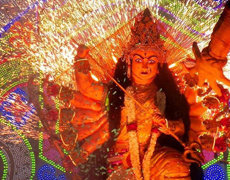
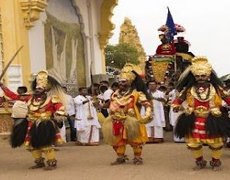

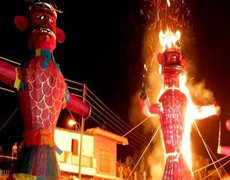
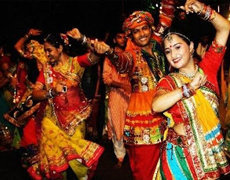
- Pulla Sai Nihitha, X
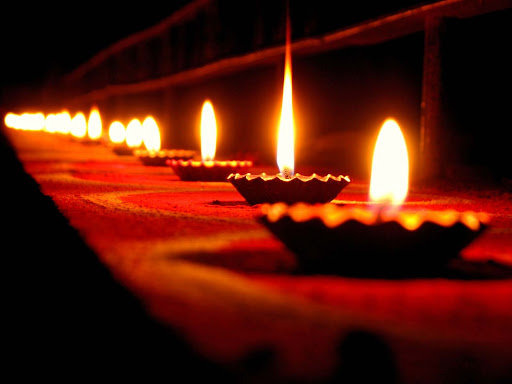
We all grew up listening to our parents say “Diwali is the festival of lights!”. Have we ever sat back and wondered why we say that? Have we ever reflected on the significance of this festival? All we knew was to wear new clothes, eat a lot of sweets and burst all those 100 and 1000 walas.
Though different regions celebrate Diwali in different ways, one thing that unites all of us is the ritual of lighting candles and diyas, glowing up our entire nation. This festival is celebrated on the new moon day - the day, which is usually a symbol for darkness.
On this day in history, glory, happiness and victory were brought back to the kingdom of Ayodhya, just by the appearance of Lord Rama after defeating the demon Ravana.
The entire city was lit with lights and there was a mood of joy and festivity all around. Just by invocating the Almighty into our hearts, we can eradicate the darkness within. This episode signifies the victory of good over evil, knowledge over ignorance and light over darkness. Diwali gives us the strength to fight our own internal demons (like, procrastination, self-doubt, addiction, ignorance, etc) and leads us to the path of light. It gives us a chance to transform ourselves to be better human beings to society.
This Diwali, let’s pick at least one demon from us, fight against it and become a better version of ourselves! Let’s spread some love not only to our family and friends, but also to our dear animals who are sensitive to noise and pollution. Let’s celebrate a sustainable Diwali filled with joy, love and laughter!
Wish you all a Happy Diwali!!
- Radha Prahlada.G, X
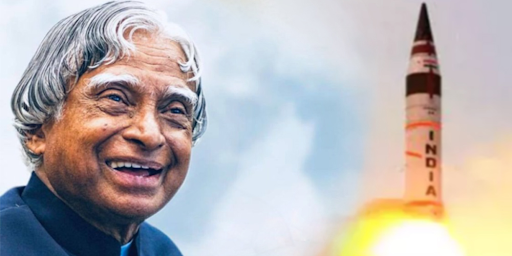
“You have to dream before your dreams can come true” said A.P.J Abdul Kalam – a name that will always be remembered in our hearts! APJ Abdul Kalam was an Indian aerospace scientist who served as the 11th president of India from 2002 to 2007.He was a great man who inspired thousands of people.He was a great source of learning and the most humble person of that stature. It’s sad that he is not with us anymore, however he will always reside in our hearts.
Here are a few from the many life lessons that we as students can learn from him -
No matter how much effort & time you’ve put in to achieve a goal, life does not always follow the plan we have set for ourselves. There will be times where it decides to take its own course and makes you follow it instead. What next? In such emergencies, it becomes essential to be prepared. And for that, you need to have the right presence of mind to decide what steps to take next in order to ensure you fall back onto track.
“My message, especially to young people is to have courage to think differently, courage to invent, to travel the unexplored path, courage to discover the impossible and to conquer the problems and succeed” he emphasized. In a country like ours where lakhs of students are preparing & competing for that one seat in their dream college, what’s the probability of you making it through them? It is your mind & thinking that makes all the difference here & not all those hours you’ve spent solving a paper! Dare to think differently & identify a technique that sets you apart from the rest.
“If you want to become unique, defeat fear and become the captain of the problem” he highlighted. The best way to succeed is to take success and failure in the same stride. Both come hand in hand. If you learn to take failure in your stride, you will also start looking at the solution for the problem rather than the cause itself. Learn to treat your failures, the same way you treat success & you will be amazed to see how you master the art of succeeding.
“To succeed in your mission, you must have single-minded devotion to your goal” as said by Abdul Kalam. To succeed in your mission you must have a clear vision of the goal. You must have a single-minded enthusiasm for your goal. Dream big and start working for it. Chase the goals and it doesn’t matter how much slower you go, as long as you’re not going to stop.
Vision and strategy are both important to lead a successful life. Which one comes first? Undoubtedly, vision. If you have a clear vision in mind, you will eventually adopt the right strategy. If you don’t have a clear vision, no strategy will work in your favour. Don’t just stop there! Once you define a vision in mind, nurture it, work towards it, wait for its fruition & finally get ready to reap its benefits
This should top the list because everything else fails in the absence of this. Dr. Kalam always emphasized that you should never lose out on your humble self even if you are the head of an entire nation. No matter where life takes you, it is essential to always remain grounded and maintain humility at all times. Modesty has, and will always remain, an alluring trait because where egoism fails, humility conquers. Right?
Gaurikhaa.R.Pillai, X
His simplicity in spite of being one the most well known people and presidents ever:
1. He refused to sit on a larger chair while President because he didn't believe in hierarchy.He refused to sit on a chair reserved for him because it was bigger than the other chairs!
2. When his team worker could not take his kids to an exhibition because of hectic work, he did!
3. He did not want broken glass on the walls because it could harm the birds!
4. He wrote a thank you letter because a kid drew his portrait!
5. He made sure Indian scientists got VIP treatment at the Paris airport.
1. He was India's first Bachelor President and a Vegetarian.
2. His first invention ever was in college! He made a double engine powered hovercraft named “Nandhi”
3. "Failure will never overtake me if my determination to succeed is strong enough." was his life motto and his most known slogan.
Stuti Kartik, X
White Cane Safety Day is celebrated on October 15 every year to applaud the achievements of the visually impaired or blind people across the globe. All over the world, the blind people or visually imapired ones carry the reliable long white cane along with them as a safety tool. The white cane helps the sighted people to recognize that the person is visually impaired. It is an important symbol of blindness and a tool of independence. Several countries abide by a few specific traffic laws exclusively designed to protect the person using the white cane. According to the World Blind Union, a global organisation, ‘White Cane Day’ is observed worldwide to recognise the movement of blind people from dependency to active participation in society. Hence, this day is marked to celebrate the achievements of the blind and visually impaired.
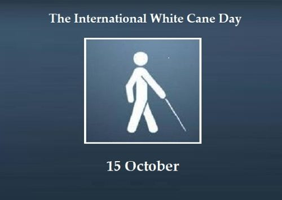

Helen Keller is one of such inspiring persons that comes to us when we talk of differently abled. She became deaf, blind and mute after getting afflicted by a serious illness at the age of nineteen months. Her disability did not bring her hopes down in life or make her feel she is inefficient at doing anything. Infact, she has become wild and unruly which is something really motivating. She was extremely intelligent and tried to understand her surroundings through touch,smell and taste. Helen was trained by Anne Sullivan, her teacher, before her actual schooling could proceed. Through patience and consistency, Anne Sullivan has won Helen’s heart and trust. She fingerspelled the names of familiar objects into Helen’s hand and she absolutely enjoyed the ‘finger-play’. Nevertheless she did not understand until the famous moment when Sullivan spelled ‘w-a-t-e-r’ while pumping water over Kellen’s hand. Helen revealed that it was incredibly magical which was possible only through exploring things with her hands and learning the names of the things via touch.
The more she had handled things and learnt their names and uses, the more joyous and confident her senses grew. Later, Helen was sent to Perkins School for the Blind in Boston where she saw her new friends spell with their fingers and that was when her heart went up in flames of joy. All her life, she had devoted her energies to humanitarian pursuits, advocating for economic justice and the rights of women and of people with disabilities. She asserted her right “to feel at home in the great world” and through her eloquence and tireless activism, she fought for the same right on behalf of all the people. She remains an inspirational icon for millions across the world.
Achievements of Helen Keller:
1. Helen Keller was the first deaf blind person to earn a bachelor degree
2. She published her famous autobiography the ‘Story of my life’ in 1903 and 12 books in her writing career including ‘Light in my darkness’.
3. She was awarded the Presidential Medal of Freedom in 1964.
4. Keller was a world renowned speaker.
5. Helen Keller is one of the most influential people of the 20th century.
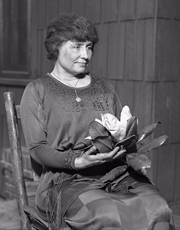
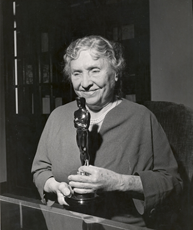
People are known as “God’s creation”. He pours life on earth in various forms which is another chance for the innocent souls to live up to their heart’s content. We must be thankful and satisfied for everything that is available to us and not overlook them. Living a lavish and healthy life does not make us superior, neither will disability make a person inferior. It is the blessed people like us whose sense organs are just right at working, must empathize with the disabled. Disability does not make a person unfortunate, only the way they accept themselves counts. All that they expect from us is our help for them to overcome the fear of being offended and discriminated against.
As outward appearances are meant to be deceptive, disabilities are never a curse. It might be a boon for them and the realization comes with their achievement in their life in the form of success. Freedom of expression and feeling of unity and equality must be maintained by us so as to make this place a safer and a comfortable zone for the disabled. One must remember to assure the visually impaired about safety through thick and thin. Only our guidance and support alone will cheer them up from insecurity to chins up. Let us all vow to be selfless to understand them and have their backs even in the darkest of situations and be a part of their ambitious journey, ready to applaud at their success.
- K.Nitya Amritasree, X

We all grew up listening to our parents say “A single hour can consist of thousands of different colours. Waxy yellows, cloud-spat blues. Murky darknesses.” Captivating line, isn’t it? The second page, keeping you hooked. The book keeps offering an interesting perspective, the one from Death. He observes the colour of the sky when he comes to collect the souls of people. But this time, he recollects a small story about a girl, an accordionist, some fanatical Germans, a Jewish fist fighter, and lots of thievery. He recollects the tale of the book thief.
This story takes place during World War 2. In a street called Heaven, a little girl, Liesel, is given away to a family. Hubermann is a patient father and teaches her to read her first book. Liesel develops a keen interest in books, and steals books along with her best friend, Rudy. Liesel eventually meets Max, who is a Jew and therefore must be hidden in the basement. His determination to stay alive is motivated by Liesel who sits next to him and reads him stories. When he had to leave, Liesel was the most distressed but found comfort in the story written by Max about his life. Max inspired Liesel way beyond imagination. But naturally, despair hits even the most unfortunate.
This book has intrigued me, the way the author decided to use Death as a narrator and how the main character slowly starts to love books. Liesel’s character development is wonderful to read about. Despite the sad times, she finds a way to be happy. And her way is through reading books. I think any person would enjoy the lightheartedness that Death, ironically, provides.
The war not being the main plotline for the book is refreshing. This novel is a classic, and I hope people recognize the genius that is this book.
- Tanya Mathews, X